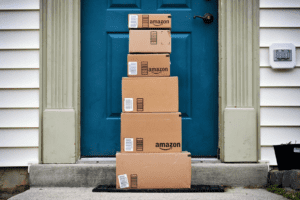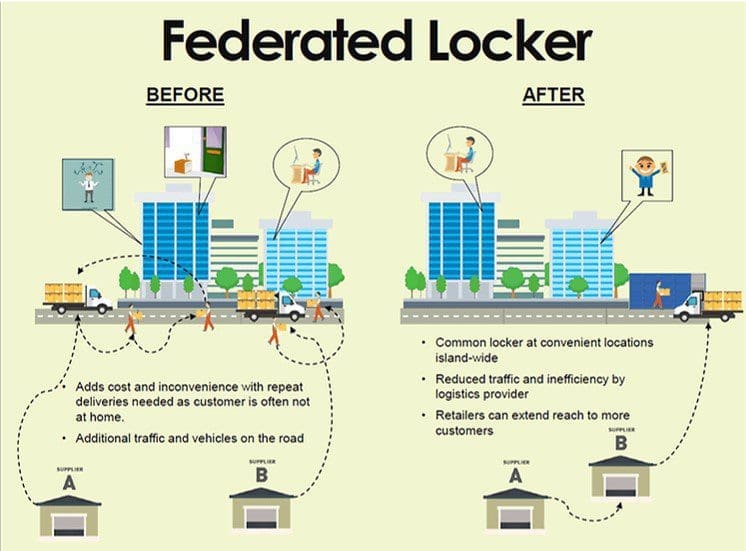 One of the most difficult and expensive aspects of the supply chain is last mile delivery. However, from a customer experience standpoint, it is also the most memorable and possibly important. Last mile delivery has become an increasingly hot topic, as companies look at ways to optimize final mile deliveries.
One of the most difficult and expensive aspects of the supply chain is last mile delivery. However, from a customer experience standpoint, it is also the most memorable and possibly important. Last mile delivery has become an increasingly hot topic, as companies look at ways to optimize final mile deliveries.
There are a variety of ways that companies can manage their transportation spend. The three traditional methods are the use of a transportation management system (TMS), transportation execution system (TES), and managed transportation services (MTS). Ultimately it comes down to whether shippers want to manage their freight spend in-house or outsource it. The most common application for in-house management is a TMS. A TMS offers optimization capabilities across multiple modes to improve service levels and reduce freight spend. The alternatives to TMS include transportation execution solutions and managed transportation. Transportation execution solutions are mode specific and lack optimization capabilities, but for shippers with simpler transportation requirements, that is often all they need.
Large shippers with complex needs may turn to managed transportation services providers to plan and execute their loads. These MTS providers may use an in-house developed TMS. Or, if they use an off-the-shelf TMS, they may get a volume discount. In some instances, they may not use a TMS at all in managed trans deals, although these providers lack a significant presence in the market. Depending on the complexity of operations, and how the company is using its technology, last mile delivery can be an integral part of the overall transportation journey.
APQC conducts research on supply chain and logistics to help organizations assess the performance of their own processes and functions compared to their peers. Most recently, APQC has conducted best practice and benchmarking research on last mile delivery. This survey-based research gathers quantitative data as well as information on practices or performance drivers. This survey focuses on the current state of key practices in last mile logistics, spread across multiple industries and over 1,100 respondents.
Broadly speaking there are first mile, middle mile, and last mile deliveries. First mile is a trip to a local or regional transportation or distribution hub. The middle mile connects a distribution hub on one side of the country to a hub on the other side. And last mile involves delivery from that destination hub to businesses, stores, and consumers in the destination region. The survey results provide a cross-industry perspective on last-mile logistics including delivery methods used, the extent of customer real-time visibility, and average vehicle capacity.
APQC Last Mile Delivery Results
According to the APQC data, the most common method of last mile delivery among respondents is via in-house delivery fleet (42 percent). The second most common method is a third-party provider other than parcel / post (33 percent). While we have seen a lot of interest around gig economy and crowdsourced delivery companies, according to the data from APQC, a mere 2 percent of respondents are using these companies for last mile delivery. This speaks volumes to the fact that companies are looking to maintain more control and a unified brand for deliveries. Additionally, there are specific industries, such as grocery, where this model is more mature and commonplace.
One area where companies have been focusing their attention regarding last mile delivery is proof of delivery. More and more often, when I receive a package from Amazon, I will also get an email with a picture of the package on my front steps. This is due to the rising instances of “porch pirates.” I recently saw a report that estimated that “porch pirates” stole up to 260 million packages in the last year alone.
According to the APQC survey, obtaining electronic proof of delivery for customer deliveries is a fairly common practice that may include customer electronic signoff, delivery snapshots, and more. On average, 79 percent of respondents engage in this practice, and at the 75th percentile, 90 percent obtain electronic proof of delivery. When looking at the 25th percentile versus the 75th percentile, the difference is significant, as 20 percent more of the top performing companies are obtaining electronic proof of delivery on the last mile delivery.
A second key area where the APQC survey focused was on visibility for last mile delivery. Consumers want visibility into their deliveries, but they also expect faster delivery speeds. For almost half of respondents (47 percent), customer visibility into real-time status extends into the “last mile” of delivery. For almost one-quarter of respondents, though, this visibility is only present to a small extent (or not at all for 3 percent). Respondents also rated the extent to which their organizations provide digital assistants that enable customers to view the real-time status of their order or shipment. For one-third of respondents, this real-time view is only present to some extent. For almost half, though, this is available to a significant or very great extent.
When it comes to delivery efficiency, whether it is first mile, middle mile, or last mile delivery, capacity is at the heart of the issue. Companies have a clear focus on ensuring that trucks are loaded at an optimal level. This means not having extra capacity that is going to waste. When it comes to last mile delivery, this is especially true. And the results from the APQC survey show that top performing companies are taking the issue more seriously.
For the final segment or last mile of deliveries, respondents reported the average vehicle capacity used when the vehicle departs their location is 84 percent on average. This refers to capacity utilization when the vehicle has been loaded at the departure location. For the top quartile of respondents, their trucks average 90 percent full, compared to only 77 percent for organizations at 25th percentile. This delta of 13 percent may not sound significant, but it has a two-fold effect. First, utilizing capacity is more profitable, as a single truck is able to make more deliveries, reducing the number of trucks on the road as well as the number of overall miles driven.
Secondly, there is the environmental impact. Looking at sustainability from a supply chain standpoint, the beauty is that sustainability ultimately results in savings. For supply chains, sustainability is symbiotic with profitability. It can take miles out of the transportation journey, air from a carton or box, or reduce trips to a specific neighborhood or house. This means money can be saved. At the same time, these “savings” can reduce greenhouse gas emissions and overall carbon footprints.
Final Thought
The APQC last mile delivery survey sheds new light on a hot topic. While we all know about the importance of last mile delivery from a brand experience standpoint, we can now look at it from the perspective of proof of delivery, visibility, and the ongoing struggle to maximize capacity. Moving forward, I expect to see the percentage of companies capturing electronic proof of delivery increase, as well as the focus on last mile delivery visibility and capacity utilization. Hopefully we will be able to update this article next year to see how the market has changed.
















 Note: Today’s post is part of our “
Note: Today’s post is part of our “
 Before digital transformation revolutionized last mile delivery in grocery retail, one of my favorite activities was going to the supermarket with my family. Hand-picking items, pushing the shopping cart, driving home with the bags, and carrying them up the stairs was quite the Sunday afternoon activity.
Before digital transformation revolutionized last mile delivery in grocery retail, one of my favorite activities was going to the supermarket with my family. Hand-picking items, pushing the shopping cart, driving home with the bags, and carrying them up the stairs was quite the Sunday afternoon activity. This is where Last Mile Delivery comes into play. Last mile delivery defines the last leg of the supply chain journey. Goods are taken from dark stores, special fulfillment centers that cater exclusively to online shopping, right to the customer’s doorstep. Then they are delivered to the customer in a matter of minutes, using minivans, motorcycles or bikes.
This is where Last Mile Delivery comes into play. Last mile delivery defines the last leg of the supply chain journey. Goods are taken from dark stores, special fulfillment centers that cater exclusively to online shopping, right to the customer’s doorstep. Then they are delivered to the customer in a matter of minutes, using minivans, motorcycles or bikes. Due to demand volatility and irregular product availability, stock-outs are among the biggest challenges faced by last mile delivery companies. Since customers have little tolerance for unavailability, they quickly turn towards competitors when they encounter a stock-out. After all, there are many active players in the last mile delivery environment.
Due to demand volatility and irregular product availability, stock-outs are among the biggest challenges faced by last mile delivery companies. Since customers have little tolerance for unavailability, they quickly turn towards competitors when they encounter a stock-out. After all, there are many active players in the last mile delivery environment. Zeynep Hazal Tuncer is a Growth Specialist at Solvoyo. Zeynep is a technology enthusiast who has a demonstrated history of working in Growth and Project Coordination roles in the tech sector. Before joining Solvoyo, she worked at Sony and Microsoft for close to 3 years, where she specialized in the marketing and sales cycle for cloud services and software licensing. At Solvoyo, she works in digital transformation projects with a focus on retail and manufacturing.
Zeynep Hazal Tuncer is a Growth Specialist at Solvoyo. Zeynep is a technology enthusiast who has a demonstrated history of working in Growth and Project Coordination roles in the tech sector. Before joining Solvoyo, she worked at Sony and Microsoft for close to 3 years, where she specialized in the marketing and sales cycle for cloud services and software licensing. At Solvoyo, she works in digital transformation projects with a focus on retail and manufacturing.
